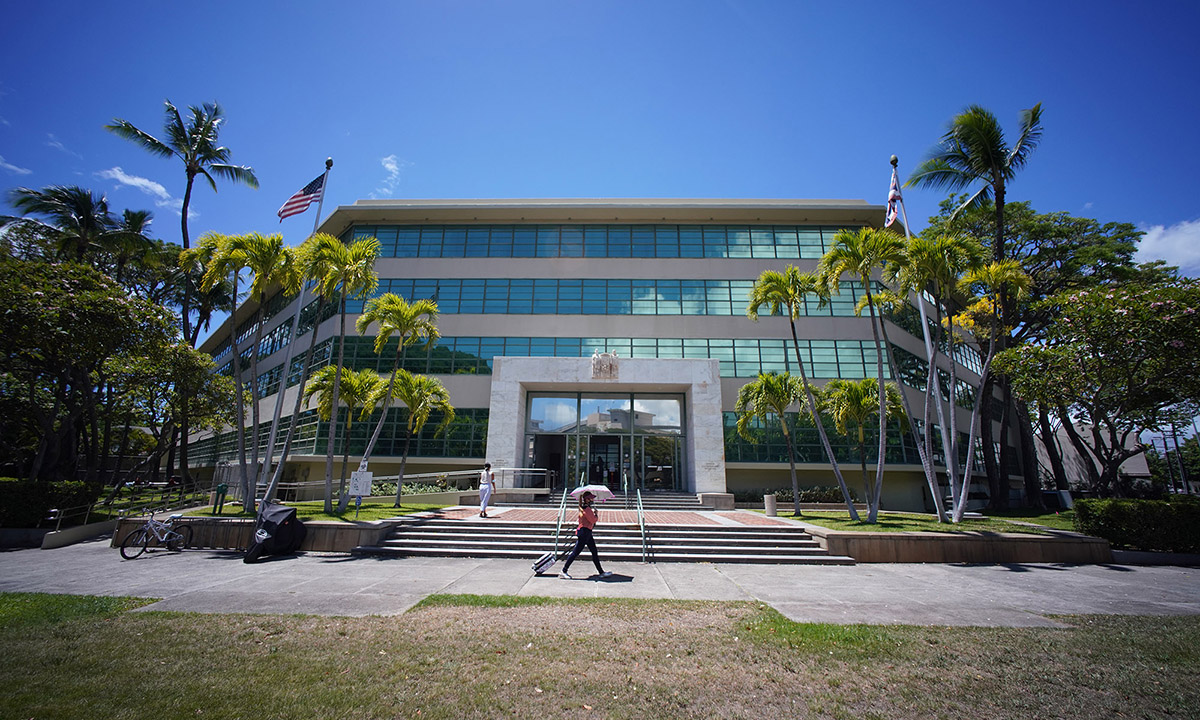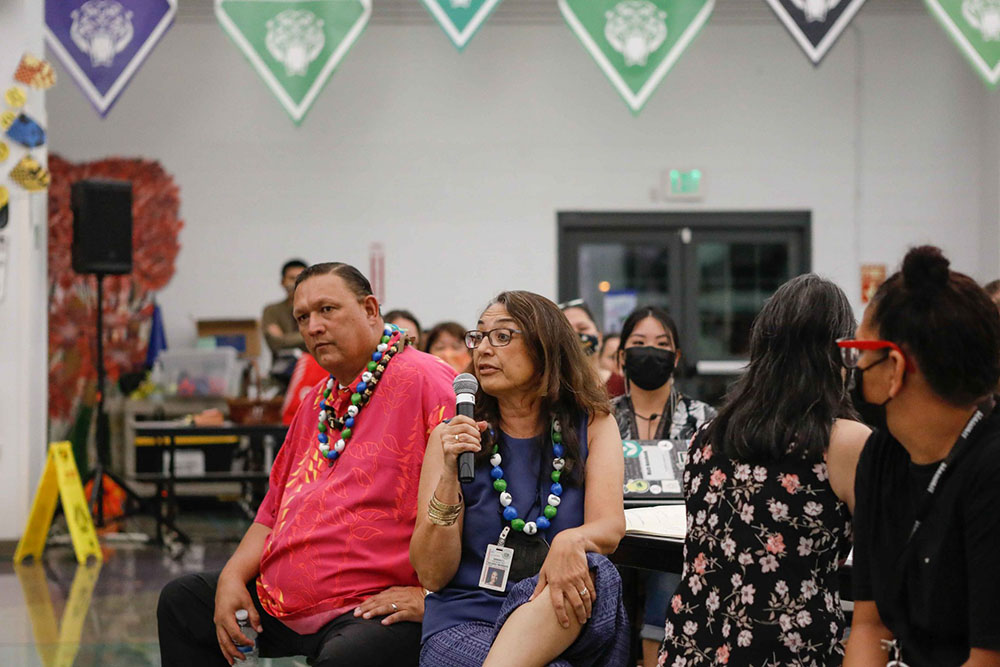The Decades-Old Debate Over Breaking Up Hawaii’s Statewide School System
Education reform efforts also tend to focus on whether the Board of Education should be elected or appointed.

Get stories like this delivered straight to your inbox. Sign up for The 74 Newsletter
Since the earliest days of statehood, politicians and voters in Hawaii have wrestled repeatedly with a fundamental question about education: Who should be in charge of — and ultimately accountable for — the quality of public schools?
Hawaii is the only state to have a single school district and no local school boards — a holdover from the plantation-era that places many major decisions about education in the hands of a state board made up of volunteers.
State task forces and panels convened in the 1960s and 1990s concluded that the centralized education system wasn’t serving the state’s communities effectively. In the wake of those reports there have been numerous efforts to create local school boards, break up the state into smaller districts, and create new outlets to involve parents and community members in school decisions.
Voters have approved changes to the structure of the Board of Education multiple times, switching from an appointed board to an elected board and back to an appointed board again — both times in an effort to bring more accountability to the state system.
The state has made strides in giving schools more autonomy and flexibility than they had in past decades, and some national experts say that Hawaii’s governance model is actually far better than the disorganized local school board system that exists in other states.
Yet parents attending community meetings held by the state BOE this year have voiced the same complaints that parents leveled at a statewide committee investigating the education system in the early 1990s: they don’t have enough of a say in the education system, and both the BOE and education department are too remote and unresponsive.
“Our structure is rigid. It’s overly centralized. It’s overly top down. It’s overly standardized,” said Randy Roth, a retired law professor who served as Gov. Linda Lingle’s education advisor and helped found a public-education think tank in Hawaii in 2014. “It has shamefully little transparency. And the way it’s structured it’s impossible to hold anyone accountable for what the kids are or are not learning.”
Failed Efforts At Reform
Nearly every governor to hold the office since the 1960s has pledged in one way or another to reform Hawaii’s school system.
One major push was in the 1990s, after a task force led by then-Lt. Gov. Ben Cayetano concluded that the state’s centralized system “distanced Hawaii’s people from their schools, while simultaneously becoming less able to address the State’s educational needs.”
The task force recommended, among other things, creating county-level boards of education and trying to shift more decision-making and accountability to the school level. The idea fizzled out after opposition from the state teacher’s union.

Karen Knudsen, who served on Cayetano’s task force and was a member of the BOE for two decades, says she disagreed with the idea of creating county-level boards — although she signed off on the report.
Increasing community input is important, but creating county boards of education is highly impractical in a small state like Hawaii, Knudsen said, because it would create too many layers of bureaucracy, and would lead to funding challenges and greater educational inequality in the state.
In the 2000s, then-Gov. Linda Lingle proposed breaking up the state into island districts, but those efforts also failed, as did efforts by the state House of Representatives to create a system of local school boards.
The biggest reforms came about in 2004, when state lawmakers passed Act 51, known better as the “Reinventing Education Act.” The law put into place the state’s current funding formula and tried to address local accountability by mandating that every school have a School Community Council — a group of administrators, parents, teachers and community members that have to sign off every year on a school’s academic and financial plans.
A decade after the act passed, fewer than half of the state’s school councils were following guidelines and posting agendas and meeting minutes regularly online. Today, many schools make no mention of a council on their website, and the DOE no longer operates a central website for the public to look up SCC agendas or members.
Many schools struggle to get people to participate, said Cheri Nakamura, head of He’e Coalition, a group of Hawaii education advocates.
“I just think that it hasn’t really had a focus. And I think schools just kind of go through the motion,” she said.
The last major legislative push to change the structure of the education system was more than a decade ago, though a few bills pop up every year.
Lawmakers this session have introduced multiple measures aimed at modifying the state Board of Education. A Republican-introduced proposal in the House to create local school boards died after facing opposition from the Hawaii State Teachers Association and the Democratic Party of Hawaii Education Caucus. Another proposal would add a teacher and school administrator as nonvoting members of the Board of Education.
Greater Accountability
Many of the debates about decentralizing Hawaii’s school system have centered around the ability of schools to be adaptable and address the needs of their unique communities and move away from a top-down structure that critics say stifles experimentation.
A broader problem, education advocates say, is accountability.
“I think schools do have a lot of flexibility actually,” Nakamura said. “But we don’t have a very good accountability system.”
It’s hard to hold volunteer board members accountable for the education system — particularly when the BOE doesn’t have control over state funding, Roth said.
“You certainly can’t hold the teachers accountable when they have so little control over what goes on in the classroom. You can’t hold the principals accountable because they’re only enforcing what decisions have been made somewhere else,” Roth said. “And the closer you get to the center, the more you realize you’re dealing with this faceless bureaucracy that defies accountability.”

In 2010, multiple former governors threw their weight behind a proposal to transition from an elected state education board to one appointed by the governor. The move, they said, would increase accountability because voters could hold the governor responsible for decisions made by the board — an idea that Knudsen argues is impractical.
“Nobody’s going to vote a governor out because schools aren’t doing well,” Knudsen said.
There’s little conclusive research on whether an elected or appointed board is more effective, but Paula Cordeiro, a professor at the University of San Diego who studies parent involvement in education, says appointed boards tend to be more representative of the communities they serve, whereas elected board members tend to come from higher socioeconomic backgrounds and on the mainland at least, are therefore more likely to be white.
“I really feel that an appointed board is better,” Cordeiro said.
The switch, which voters narrowly approved at the polls, has led to a better structured board than some of the boards in the past, Nakamura said.
But it’s also led to cuts in the board’s budget. Which in turn has resulted in fewer full board meetings being held on neighbor islands. Although the board holds more informal community meetings in different parts of the state throughout the year, they aren’t structured in a way to garner meaningful public input, Nakamura said.
Part of the challenge, Roth said, is that the board of education doesn’t have any real way to hold the Department of Education accountable, because it is totally reliant on whatever the department tells it.
“Our Board of Education really doesn’t have the means to investigate and evaluate what’s going on,” Roth said.
Board members are volunteers, often with other busy careers. They have a minimal budget to work with, and so the BOE knows what the DOE tells it.
“Even the most knowledgeable people in the world would have a very difficult time providing any sort of meaningful oversight,” he said.
The answer to that isn’t creating more boards, though, Nakamura contends. It is possible to govern and manage a large system effectively, Nakamura said. But it’s up to the department and the board to come up with a system design that can effectuate that.
“We need to streamline the design of the entire system so that schools can focus on what is appropriate and effective for teaching and learning,” she said.
Civil Beat’s education reporting is supported by a grant from Chamberlin Family Philanthropy.
Get stories like these delivered straight to your inbox. Sign up for The 74 Newsletter

;)